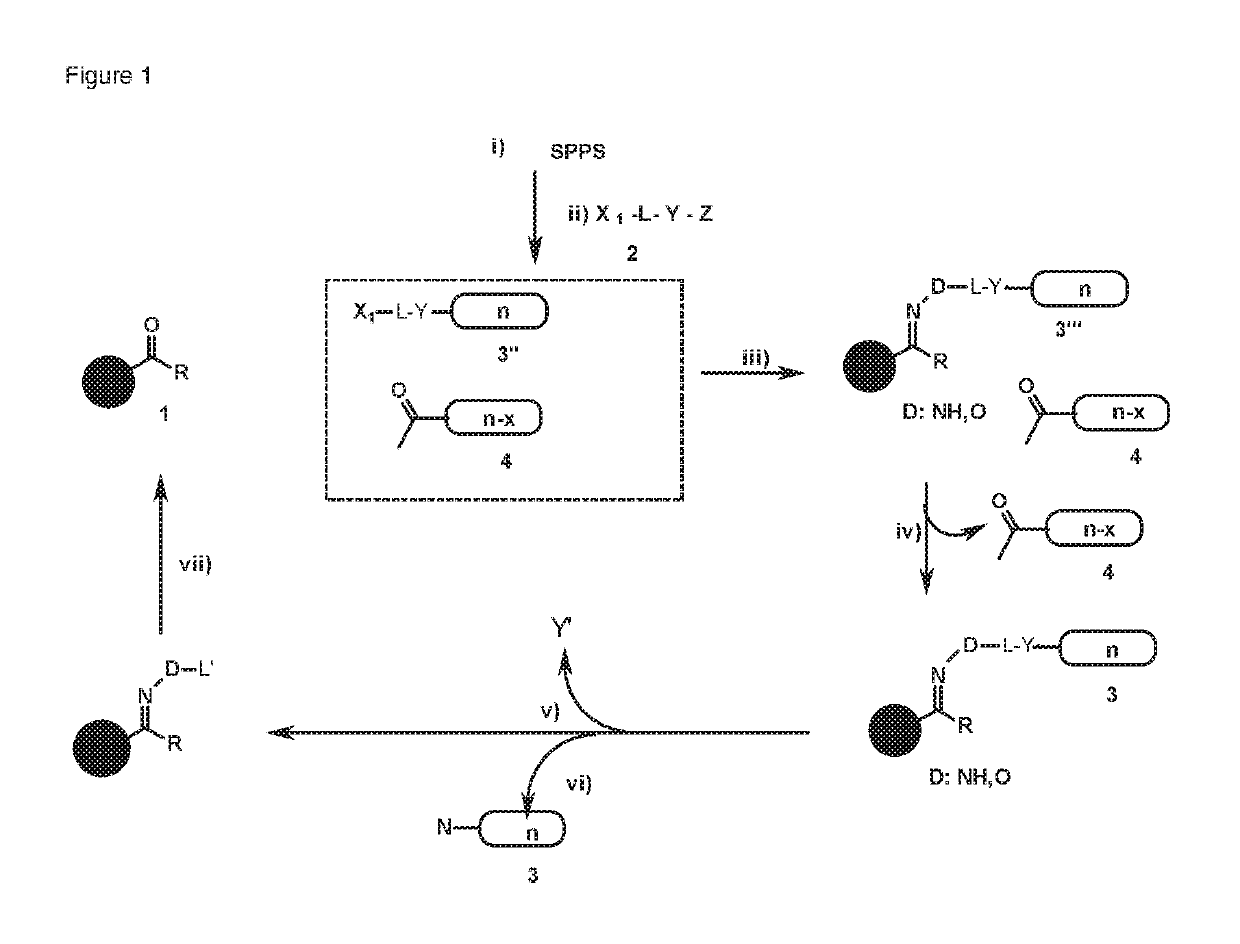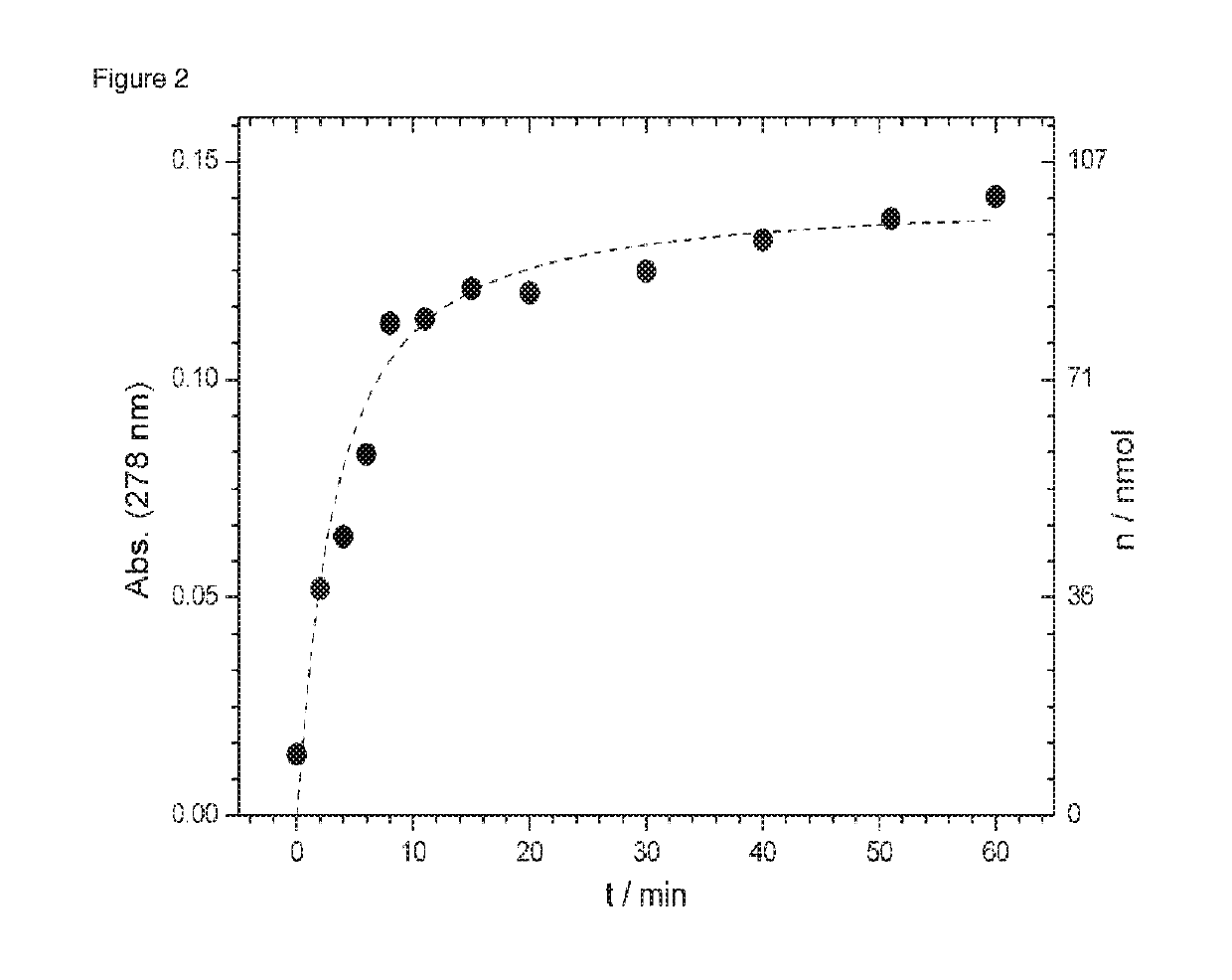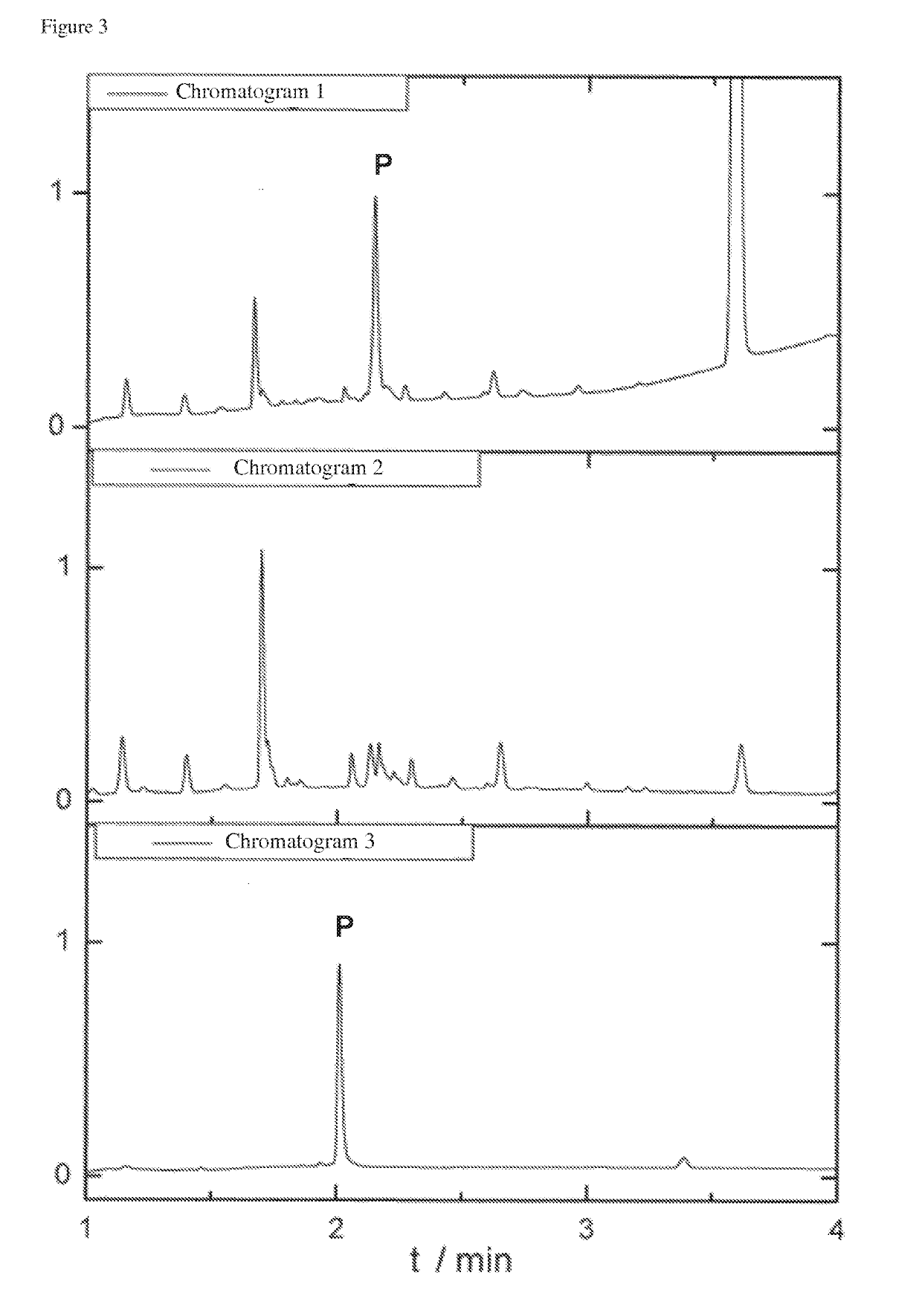Linker molecule and use thereof in methods for purifying peptides
a technology of linker molecule and purification method, which is applied in the field of linker molecule and use thereof in purification method of peptide, can solve the problems of high acquisition cost of corresponding complex device, inability to accurately analyze individual fractions, and inability to meet the requirements of thiol-containing peptides, etc., to achieve low cost, cost-effective, efficient and scalable, and high loading densities
- Summary
- Abstract
- Description
- Claims
- Application Information
AI Technical Summary
Benefits of technology
Problems solved by technology
Method used
Image
Examples
example 1
tion of the Reversibility of the Hydrazone / Oxime Bond
[0160]The reversible binding of the peptide to aldehyde-modified agarose beads is demonstrated in the following using the example of hydrazone binding; due to the electronic similarity (see also A. Dirksen, P. Dawson, Bioconjugate Chem. 2008, 19, 2543-2548.), the results are applicable to the oxime bond. It is shown that the equilibrium can be controlled by the addition of hydrazine (N2H4).
[0161]Peptide 3 was bound to the support 1 in the conjugation buffer (0.1 M NH4OAc, 0.1 M PhNH2, pH=3) in 30 min (FIG. 6: Scheme 3). Subsequently, it was washed with water and the supernatant removed. Then a solution of 0.5 volume percent hydrazine hydrate was added to the beads and the absorption was measured at 278 nm of the supernatant (200 L) at a time interval (with the ND-I000 spectrophotometer from NanoDrop Technologie). It was found that after 10 min, 80% of the peptide can be measured in the supernatant. After another 50 minutes, 86% of...
example 2
ion of a Peptide after Native Chemical Ligation (NCL)
[0162]The purification of a peptide from a complex system containing a mixture of peptide material as well as organic and inorganic impurities was performed.
[0163]The mixture to be purified was obtained after an NCL (FIG. 7: scheme 4). This reaction is performed in an aqueous buffer system and is used to synthesize larger peptides and protein domains. After 24 h reaction time of the NCL the raw mixture is obtained, which essentially contained the desired ligation product and the thioester (H-YENRIK-MESA), which was used in excess. This can be seen in the chromatogram (UPLC-MS from Waters, Acquity H-Class PDA / QDa, on Polaris C18 A 5 μm 250 / 4 column) in FIG. 3.
[0164]Twice the volume of conjugation buffer was added to the ligation buffer (0.1 M Na2HPO4, 20 mM TCEP, 50 mM MesNa, pH=7). Modified sepharose beads were subsequently added and the two-phase system was shaken for 30 minutes. The supernatant of the sepharose gel was analysed ...
example 3
Purification of a Peptide Mixture after Solid Phase Peptide Synthesis
[0165]The reaction scheme (scheme 5) of purification according to the invention is shown in FIG. 8.
[0166]After solid phase synthesis (SPPS), a capture molecule 2 (FIG. 8) is added to the last coupled amino acid. An important prerequisite for this is that acetylation was complete in the previous steps. Afterwards, all truncated sequences and the capture-molecule-modified full-length peptide are cleaved from the resin. Subsequently, non-peptide impurities are removed by ether precipitation and the crude peptide mixture is dissolved in an acetate buffer which has a pH value of 3-4 and to which 0.1 M aniline is added as catalyst. This solution is now added to functionalized sepharose beads 1 (FIGS. 8 and 9). This material is applied in protein purification as a material for affinity chromatography. Sepharose has the advantage of being easily penetratable by the peptides. The sepharose is previously aldehyde modified (s...
PUM
| Property | Measurement | Unit |
|---|---|---|
| length | aaaaa | aaaaa |
| composition | aaaaa | aaaaa |
| full-length | aaaaa | aaaaa |
Abstract
Description
Claims
Application Information
 Login to View More
Login to View More - R&D
- Intellectual Property
- Life Sciences
- Materials
- Tech Scout
- Unparalleled Data Quality
- Higher Quality Content
- 60% Fewer Hallucinations
Browse by: Latest US Patents, China's latest patents, Technical Efficacy Thesaurus, Application Domain, Technology Topic, Popular Technical Reports.
© 2025 PatSnap. All rights reserved.Legal|Privacy policy|Modern Slavery Act Transparency Statement|Sitemap|About US| Contact US: help@patsnap.com



